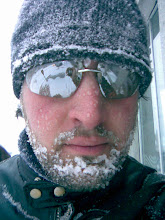Let there be no doubt the following is an academic paper. I'd like to hear some commentary on it. Expect to see more papers like this over the next few months. As the world enters a new realm of imperialism and oil, while giving a nation great wealth, makes them a target of the US, issues of colonialism, post-colonialism and national identification will become more and more relevant. Let's start the discussions now.
The Spanish conquest of the Americas and its peoples illustrate a three pronged pattern used by Spain not only in the New World, but also in Africa. Much like the triangle, each aspect of this pattern works to support and sustain the other two. In no particular order they are: A quick turnaround of resources; a renaming of the land and people and a lack of self-representation in the cannon – with the exception of a very important few that will not be addressed in this response due to lack of spatial constraints.
The Resources:
At each area of conquest, Bernal Diaz very carefully notes the commands given by Cortes to replenish supplies or the receipt of gifts of food by the natives. And, each of the early stops discussed in The Conquest of New Spain center around the resources and the ease and ability, or lack of either of these, for the Spanish to collect them. For example, the battle of
Absent from Diaz’s account, according to Matthew Restall’s “Black Conquistadors: Armed African’s in Early Spanish America,” are records of the African and mulatto men who accompanied Cortes. This is not surprising because although they were resources, like horses (Diaz 55), and not men on the expedition, they were not resources gained on the expedition – in the same vein, Diaz does not talk about the gold, ivory and slaves from Oran and Bejaïa (http://encarta.msn.com/encyclopedia_761595536 _4/Spanish_Empire.html#s16).
Going beyond the lack of names provided by Diaz, Restall observes it is “plausible that a third to half bore that name [Juan]” due to a lack of imagination on the Spaniards part when assigning names to the slaves. Like the maps and Donna Marina, the resources have lost their autonomy. And, like the rest of the resources from
The Triangular Nature of the Pattern:
The following three paragraphs each take a single aspect of this pattern and juxtaposes it with one of the other aspects. In each case, the support of the third aspect of the pattern becomes apparent.
Couple the concepts: “lack of autonomy” with “being a resource.” The result sets up a situation where self-representation becomes impossible. Be it gold, horse, or any other resource, barter-able item lacks the ability to represent itself.
Couple the concepts: “being a resource” and “lack of self-representation.” The lack of autonomy that is created with this combination helps prevent rebellious uprisings and to facilitate the turnaround of the resources.
Couple the concepts: “lack of autonomy” and “lack of self-representation.” Without representation, an individual or group lacks the ability to be a human that operates within society. That person then becomes either a resource or waste. Without autonomy, the individual cannot even choose which of those to become – and with the value of unskilled labor at a high in

No comments:
Post a Comment